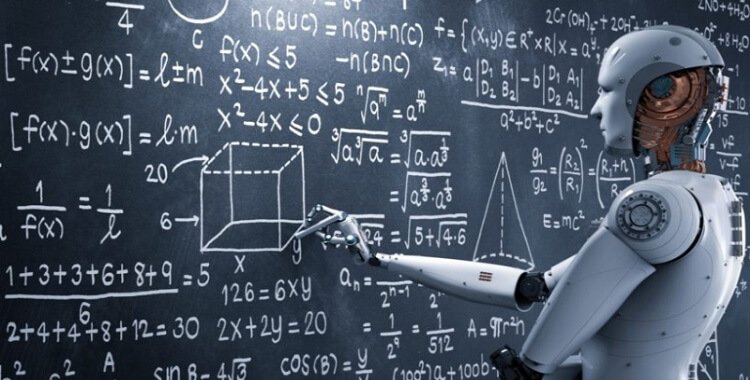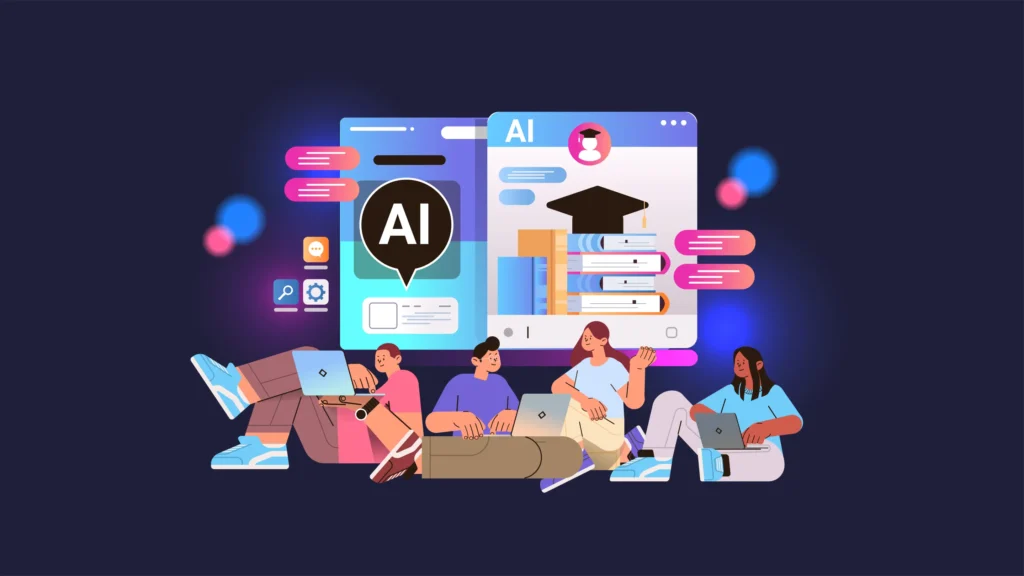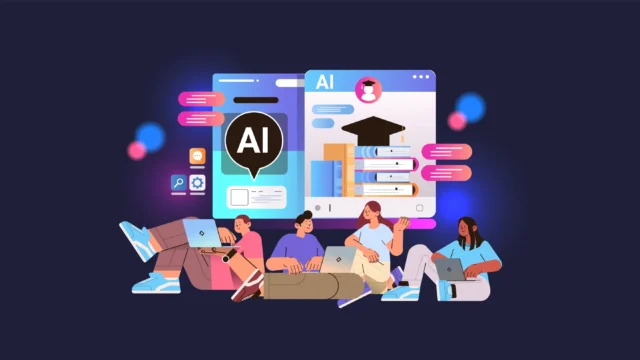In classrooms, homes, and online spaces across Nigeria, Artificial Intelligence (AI) is steadily transforming how we acquire knowledge. Once limited to sci-fi movies, AI is now in apps, tutoring tools, and personalised learning platforms. For many students, AI offers learning that adapts to them—not forcing every learner into the same mould.
These intelligent systems monitor how fast or slow a learner understands a topic, where they struggle, and adapt accordingly. For instance, an app might slow down when a student struggles with algebra or grammar, offer more examples, or suggest simpler explanations. Teachers, too, are now able to spend less time on repetitive chores like marking many similar assignments, allowing them more time to mentor and interact with students one-on-one.
Moreover, for students in remote or underserved areas—places where qualified teachers or advanced learning resources are scarce—AI-powered tools can bridge gaps. With good internet access, learners can tap into virtual libraries, interactive content, and instructional tools that were once out of reach. The result: more equitable access to quality learning materials.
But this change does not come without its set of concerns, which we look into further below.

Table of Contents
What AI Brings: Benefits that Transform Learning
Personalised Learning
One of AI’s biggest advantages in education is personalisation. Instead of expecting every student to progress at the same pace, AI platforms track individual strengths and weaknesses. When you do well, they move you forward; when you struggle, they slow down or offer extra help. This kind of adaptive learning makes sure that learners are neither bored nor overwhelmed.
Instant Feedback & Support
AI tools often give fast feedback. Whether it is correcting multiple-choice answers or pointing out mistakes in essays, the learner gets responses almost immediately. This helps students understand errors while the topic is still fresh in their minds. Also, chatbots and virtual assistants are now available around the clock, meaning that a student’s questions don’t have to wait until class or office hours.
Administrative Relief for Teachers
In Nigeria and elsewhere, teachers often spend huge amounts of time on non-teaching duties: checking papers, attendance registers, scheduling, and preparing materials. AI tools can automate many of these tasks. This relief lets teachers redirect time toward more human tasks—mentoring students, designing creative lessons, or helping those who are falling behind.
Enhanced Engagement via Interactive Learning
Learning becomes more alive with simulations, gamification, virtual reality (VR) or augmented reality (AR), and visually rich content. Concepts that used to be abstract—say in physics, geography or biology—can be experienced, simulated, and manipulated, which helps retention and understanding. Learners often feel more involved and motivated this way.

The Flip Side: Risks, Weaknesses and What We Must Watch Out For
Over-dependence and Decline in Critical Thinking
When AI supplies ready answers, there’s a real danger that learners might stop thinking through problems themselves. If someone always uses an AI tool to write essays or solve maths problems, they may not develop the reasoning, creativity, or problem-solving skills that come from struggling and thinking. Over time, this could weaken deep learning.
Inequality, Bias and Access Barriers
Not all learners have equal access to devices, stable internet, or electricity—major issues in many parts of Nigeria. Even when access is present, AI systems trained mostly on data from other countries may inadvertently ignore local context, culture, or languages. That introduces bias and can make systems less effective or even unfair.
Privacy, Data Security and Ethical Concerns
AI tools often require collecting personal and performance data: where you struggle, how fast you finish tasks, etc. Without strong protections, that data could be misused. There are also questions about who owns content generated by AI, how transparent these systems are, and whether they respect cultural and ethical norms.
Loss of Human Connection in Learning
Teaching is more than content delivery. It’s mentorship, encouragement, emotional feedback, and the bonding between teacher and student. If AI starts replacing human contact too much, students may feel isolated. The human elements of motive, compassion, correcting misunderstandings in real time, or adapting intuitively to student moods—these are hard for AI to imitate well.
Striking the Balance: How Nigeria Can Make Learning With AI Work
To maximise the positives and minimise the negatives, Nigeria needs intentional strategies.
- Teacher Training: Schools and government should invest in training educators on how to use AI wisely—not to replace them, but to augment their work. Teachers need to know how to integrate AI, how to verify AI outputs, and how to nurture critical thinking in the age of AI.
- Equitable Access: Government, NGOs, and the private sector should push to provide reliable power, broadband or mobile internet in underserved areas, and affordable devices. Bridging the digital divide is essential so AI’s benefits do not widen educational gaps.
- Localisation of Content: AI systems must be tuned to Nigeria’s languages, cultural contexts, learning styles, and curricular requirements. When content reflects students’ realities, engagement and comprehension improve.
- Ethical and Regulatory Frameworks: There should be clear policies about data privacy, student data ownership, transparency of AI algorithms, and how to manage bias. Protecting learner information and ensuring systems are fair is non-negotiable.
- Blended Learning: Combining human teachers and AI is likely the most productive path. Use AI for repetitive tasks, adaptive content, and feedback; let human educators handle mentorship, values, reasoning, and relational aspects.
- Promotion of Critical Thinking Skills: Students should be encouraged to question AI outputs, verify information, and think through solutions themselves—not just accept what AI suggests. This will help build thinking skills that last.

Conclusion
AI has enormous potential to reshape how we learn: making education more personal, accessible, engaging, and efficient. But that potential only becomes real when we handle the risks with care—ensure human connection remains, access is equitable, ethics are respected, and learners are equipped not just to consume knowledge, but to critique and create.
Join Our Social Media Channels:
WhatsApp: NaijaEyes
Facebook: NaijaEyes
Twitter: NaijaEyes
Instagram: NaijaEyes
TikTok: NaijaEyes





